- Home
- John Irving
A Widow for One Year Page 11
A Widow for One Year Read online
Page 11
Afterward, Eddie lay on his side with his face against her breasts; Marion ran her fingers through the boy’s hair. Even then, Marion could not stop herself from making a critical observation of Eddie’s haircut—she made a mental note to tell the barber to take a little less off the back next time. Then she revised her mental note. The summer was running out; there would be no “next time.”
That was when Eddie asked his second question of the night. “Tell me about the accident,” he said. “I mean, do you know how it happened? Was it anybody’s fault?”
A second before, pulsing against his temple, he had felt her heart beating through her breast. But now it seemed to Eddie that Marion’s heart had stopped. When he lifted his head to look at her face, she was already turning her back to him. This time there wasn’t even the slightest shaking of her shoulders; her spine was straight, her back rigid, her shoulders square. He came around the bed and knelt beside her and looked into her eyes, which were open but distant; her lips, which, when she slept, were full and parted, were thin and closed.
“I’m sorry,” Eddie whispered. “I’ll never ask you again.” But Marion remained as she was—her face a mask, her body a stone.
“Mommy!” Ruth called, but Marion didn’t hear her—she didn’t even blink. Eddie froze, waiting for the patter of the four-year-old’s feet across the bathroom floor. But the child was staying in her bed. “Mommy?” she cried, more tentatively now. There was a hint of worry in her voice. Eddie, naked, tiptoed to the bathroom. He wrapped a bath towel around his waist—a better choice than a lamp shade. Then, as quietly as possible, Eddie began to retreat in the direction of the hall.
“Eddie?” the child asked. Her voice was a whisper.
“Yes,” Eddie answered, resigned. He tightened the towel around himself and padded barefoot through the bathroom to the child’s room. Eddie thought that the sight of Marion would have frightened Ruth more than the child was already frightened—that is, if the four-year-old had seen her mother in Marion’s newly acquired, seemingly catatonic state.
Ruth was sitting up in bed, not moving, when Eddie walked into her room. “Where’s Mommy?” the child asked him.
“She’s asleep,” Eddie lied.
“Oh,” the girl said. With a look, she indicated the towel knotted around Eddie’s waist. “Did you take a bath?”
“Yes,” he lied again.
“Oh,” Ruth said. “But what did I dream about?”
“What did you dream about?” Eddie repeated stupidly. “Uh, I don’t know. I didn’t have your dream. What did you dream about?”
“Tell me!” the child demanded.
“But it’s your dream,” Eddie pointed out.
“Oh,” the four-year-old said.
“Would you like a drink of water?” Eddie asked.
“Okay,” Ruth replied. She waited while he ran the water until it was cold and brought it to her in a cup. When she handed the cup back to him, she asked: “Where are the feet?”
“In the photograph, where they always are,” Eddie told her.
“But what happened to them?” Ruth asked.
“Nothing happened to them,” Eddie assured her. “Do you want to see them?”
“Yes,” the girl replied. She held out her arms, expecting to be carried, and he lifted her out of bed.
Together they navigated the unlit hall; both of them were aware of the infinite variety of expressions on the faces of the dead boys, whose photographs were mercifully in semidarkness. At the far end of the hall, the light from Eddie’s room shone as brightly as a beacon. Eddie carried Ruth into the bathroom, where, without speaking, they looked at the picture of Marion in the Hôtel du Quai Voltaire.
Then Ruth said, “It was early in the morning. Mommy was just waking up. Thomas and Timothy had crawled under the covers. Daddy took the picture—in France.”
“In Paris, yes,” Eddie said. (Marion had told him that the hotel was located on the Seine. It had been Marion’s first time in Paris—the boys’ only time.)
Ruth pointed to the bigger of the bare feet. “Thomas,” she said. Then she pointed to the smaller of the feet; she waited for Eddie to speak.
“Timothy,” Eddie guessed.
“Right,” the four-year-old said. “But what did you did to the feet?”
Me? Nothing,” Eddie lied.
“It looked like paper, little pieces of paper,” Ruth told him. Her eyes searched the bathroom; she made Eddie put her down so that she could peer into the wastebasket. But the maid had come to clean the room many times since Eddie had removed the scraps of notepaper. Finally Ruth held out her arms to Eddie; once more he picked her up.
“I hope it doesn’t happen again,” the four-year-old said.
“Maybe it never happened; maybe it was a dream,” Eddie told her.
“No,” the child replied.
“I guess it’s a mystery,” Eddie said.
“No,” Ruth told him. “It was paper. Two pieces.” She kept scowling at the photograph, daring it to change. Years later, Eddie O’Hare would be unsurprised that, as a novelist, Ruth Cole was a realist.
At last he asked the girl: “Don’t you want to go back to bed?”
“Yes,” Ruth replied, “but bring the picture.”
They went down the dark hall, which seemed darker now—the feeble night-light from the master bathroom cast only the dimmest glow through the open door of Ruth’s room. Eddie carried the child against his chest. He found her heavy to carry with one arm; in his other hand, he carried the photograph.
He put Ruth back in her bed, and leaned the picture of Marion in Paris against a chest of drawers. The photograph faced Ruth, but the child complained that the photo was too far away from her bed for her to see it properly. Eddie ended up propping the photograph against the footstool, near the head of Ruth’s bunk bed. Ruth was satisfied. The four-year-old fell back to sleep.
Before Eddie went back to his room, he took another look at Marion. Her eyes were closed, her lips were parted in her sleep, and her body had given up its terrifying rigidity. Only a sheet covered her hips; her upper body was bare. It was a warm night; Eddie nevertheless covered her breasts with the sheet. She looked a little less abandoned that way.
Eddie was so tired that he lay down on his bed and fell asleep with the towel still wrapped around his waist. In the morning, he woke to the sound of Marion calling for him—she was screaming out his name— and he could hear Ruth crying hysterically. He ran down the hall (still in the towel) and found Marion and Ruth bent over a bloodstained sink in the bathroom. There was blood everywhere. It was on the child’s pajamas, on her face, in her hair. The source was a single deep cut in Ruth’s right index finger. The pad of the first joint of her finger had been slashed to the bone. The cut was perfectly straight and extremely thin.
“She said it was glass,” Marion told Eddie, “but there’s no glass in the cut. What glass, honey?” Marion asked Ruth.
“The picture, the picture!” the child cried.
In an effort to conceal the photograph under her bunk, Ruth must have banged the picture frame against a part of her bed—or against the footstool. The glass covering the photo was shattered; the photograph itself was undamaged, although the mat was spotted with blood.
“What did I did?” the four-year-old kept asking. Eddie held her while her mother got dressed; then Marion held Ruth while Eddie dressed himself.
Ruth had stopped crying and was now more concerned about the photograph than about her finger. They took the photo, still in the blood-spotted mat, out of the shattered frame; they brought the picture in the car with them, because Ruth wanted the picture to come to the hospital. Marion tried to prepare Ruth for the stitches, and there would probably be at least one shot. In truth, there would be two—the lidocaine injection before the stitches, and then a tetanus shot. Despite how deep it was, the cut was so clean and so thin that Marion was sure it wouldn’t require more than two or three stitches or leave a visible scar.
&
nbsp; “What’s a scar?” the child asked. “Am I going to die?”
“No, you are not going to die, honey,” her mother assured her.
Then the conversation turned to the matter of fixing the photograph. When they were finished at the hospital, they would take the photo to a frame shop in Southampton and leave it to be reframed. Ruth began to cry again, because she didn’t want the picture to be left at the shop. Eddie explained that there had to be a new mat, a new frame, and new glass.
“What’s a mat?” the four-year-old asked.
When Marion showed Ruth the blood-spotted mat (but not the photograph), Ruth wanted to know why the bloodstain wasn’t red; the spot of blood had dried and turned brown.
“Will I turn brown?” Ruth asked. “Am I going to die?”
“No, you won’t, honey. No, you’re not, ” Marion kept telling her.
Of course Ruth screamed at the needles, and at the stitches—there were only two. The doctor marveled at the perfect straightness of the wound; the pad of the right index finger had been precisely bisected. It would have been next to impossible for a surgeon to have cut the exact middle of such a small finger so deliberately, even with a scalpel.
After they dropped off the photograph at the frame shop, Ruth sat subdued in her mother’s lap. Eddie drove back to Sagaponack, squinting into the morning sun. Marion lowered the sun visor on the passenger side, but Ruth was so short that the sunlight shone directly into her face, causing her to turn toward her mother. Suddenly Marion began to stare into her daughter’s eyes—into Ruth’s right eye, in particular.
“What’s the matter?” Eddie asked. “Is there something in her eye?”
“It’s nothing,” Marion said.
The child curled against her mother, who shielded the sunlight from her daughter’s face with her hand. Exhausted from all her crying, Ruth fell asleep before they reached Sagaponack.
“What did you see?” Eddie asked Marion, whose gaze was notably distant again. (It was not as distant as the night before, when Eddie had asked her about her boys’ accident.) “Tell me,” he said.
Marion pointed to the flaw in the iris of her right eye, that hexagon of yellow which Eddie had often admired; he had more than once remarked to her that he loved the tiny yellow speck in her eye—the way, in certain light or at unpredictable angles, it could turn her right eye from blue to green.
Although Ruth’s eyes were brown, what Marion had seen in the iris of Ruth’s right eye was the exact same hexagonal shape of bright yellow. When the four-year-old had blinked in the sunlight, the yellow hexagon had demonstrated its capacity to turn Ruth’s right eye from brown to amber.
Marion continued to hug her sleeping daughter to her breast; with one hand, she still shielded the four-year-old’s face from the sun. Eddie had never before seen Marion manifest such a degree of physical affection for Ruth.
“Your eye is very . . . distinguished,” the sixteen-year-old said. “It’s like a birthmark, only more mysterious. . . .”
“The poor child!” Marion interrupted him. “I don’t want her to be like me !”
Dumping Mrs. Vaughn
For the next five or six days, before Ruth’s stitches were removed, the child didn’t go to the beach. The nuisance of keeping the cut dry made the nannies irritable. Eddie detected an increased sullenness in Ted’s and Marion’s behavior toward each other; they had always avoided each other, but now they never spoke to or even looked at each other. When one wanted to complain about the other, the complaint was made to Eddie. For example, Ted held Marion responsible for Ruth’s injury, although Eddie had repeatedly told him that it was he who had let Ruth have the photograph.
“That’s not the point,” Ted said. “The point is, you shouldn’t have gone into her room in the first place—that’s her mother’s job.”
“I told you. Marion was asleep,” Eddie lied.
“I doubt it,” Ted told the boy. “I doubt that ‘asleep’ accurately describes Marion’s condition. I would guess that she was zonked .”
Eddie wasn’t sure what Ted meant. He said, “She wasn’t drunk, if that’s what you mean.”
“I didn’t say she was drunk—she’s never drunk,” Ted told Eddie. “I said she was zonked . Wasn’t she?”
Eddie didn’t know what to say; he reported the problem to Marion.
“Did you tell him why ?” she asked the boy. “Did you tell him what you asked me?”
Eddie was shocked. “No, of course not,” the sixteen-year-old said. “
Tell him!” Marion exclaimed.
So Eddie told Ted what happened when he asked Marion about the accident. “I guess I zonked her,” Eddie explained. “I keep telling you— the whole thing is my fault.”
“No, it’s Marion’s fault,” Ted insisted.
“Oh, who cares whose fault it is?” Marion said to Eddie. “
I care,” Eddie said. “ I’m the one who let Ruth have the photograph in her room.”
“This isn’t about the photograph—don’t be silly,” Marion told the sixteen-year-old. “This has nothing to do with you, Eddie.”
It was a blow to the boy to realize that she was right. Eddie O’Hare was involved in what would be the most important relationship in his life; yet what was happening between Ted and Marion had nothing to do with him.
Meanwhile, Ruth asked every day about the unreturned photograph; every day there was a phone call to the frame shop in Southampton, but the matting and framing of a single eight-by-ten photo was not a priority in the framer’s busiest season of the year.
Would the new mat have a spot of blood on it? Ruth wanted to know. (No, it would not.) Would the new frame and the new glass be exactly like the old frame and the old glass? (Close enough.)
And every day and every night, Ruth would lead the nannies, or her mother or father, or Eddie, through the gallery of photographs hanging in the Coles’ house. If she touched that photo, could the glass cut her? If she dropped this one, was it also glass and would it break? Why did glass break, anyway? And if glass could cut you, why would you want any glass in your house?
But before Ruth’s repeated questions, the month of August had passed the midpoint; it was markedly cooler at night. Even the carriage house was comfortable for sleeping. One night when Eddie and Marion were sleeping there, Marion forgot to tack the towel over the skylight. They were awakened early in the morning by a low-flying flock of geese. Marion said: “Going south already?” She didn’t speak to Eddie or Ruth for the rest of the day.
Ted radically revised A Sound Like Someone Trying Not to Make a Sound; for almost a week, he presented Eddie with a completely rewritten draft every morning. Eddie would retype the manuscript the same day; the next morning Ted’s rewrite would come back to him. No sooner was Eddie beginning to feel like an actual writer’s assistant than the rewriting process stopped. Eddie wouldn’t see A Sound Like Someone Trying Not to Make a Sound again until it was published. Although it would be Ruth’s favorite among her father’s books, it would never be a favorite of Eddie’s; he’d seen too many versions of it to appreciate the final draft.
And in the mail one day, just before Ruth’s stitches were removed, was a fat envelope for Eddie from his father. It contained the names and addresses of every living Exonian in the Hamptons; in fact, it was the very same list of names and addresses that Eddie had thrown away on the ferry while crossing Long Island Sound. Someone had found the envelope with the embossed Phillips Exeter Academy return address and the senior O’Hare’s carefully handwritten name—a janitor, or one of the ferry crew, or some meddler snooping through the trash. Whoever the idiot was, he or she had returned the list to Minty O’Hare.
“You should have told me that you lost this,” Eddie’s father wrote to him. “I would have copied the names and addresses and given them to you again. Thankfully someone recognized their value. A remarkable act of human kindness—and at a time in our history when acts of kindness are growing rare. Whoever it was, man or woman, didn�
�t even ask to be repaid for the postage! It must have been the Exeter name— on the envelope, I mean. I’ve always said that you can never overestimate the influence of the academy’s good name. . . .” Minty had added one name and address, he noted to Eddie: an Exonian in nearby Wainscott had somehow been omitted from the original list.
It was an irritating time for Ted, too. Ruth claimed that her stitches gave her nightmares; she had most of her nightmares when it was Ted’s turn to stay with her. One night the child cried and cried for her mother; only her mommy—and, to Ted’s further exasperation, Eddie— could comfort her. Ted had to call them in the carriage house and tell them to come home. Then Eddie had to drive Ted back to the carriage house, where, Eddie imagined, the imprints of his and Marion’s bodies were still visible (if not still warm) on the bed.
When Eddie returned to the Coles’ house, all the upstairs lights were on. Ruth could be soothed only by being carried from photograph to photograph. Eddie volunteered to complete the guided tour, so Marion could go back to bed, but Marion seemed to be enjoying herself; in fact, Marion was aware that this would probably be her last journey through the photographic history of her dead boys with her daughter in her arms. Marion was actually prolonging the narrative that accompanied each picture. Eddie fell asleep in his room, but with the door to the upstairs hall open; for a while, he could hear Ruth’s and Marion’s voices.
Eddie knew by the child’s question that they were looking at the photograph (in the middle guest bedroom) of Timothy crying and covered with mud. “But what happened to Timothy?” Ruth asked, although she knew the story as well as Marion did. By now, even Eddie knew all the stories.

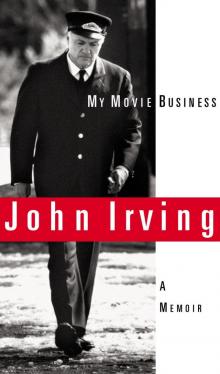 My Movie Business: A Memoir
My Movie Business: A Memoir In One Person
In One Person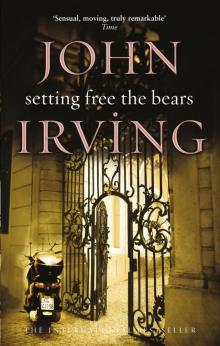 Setting Free the Bears
Setting Free the Bears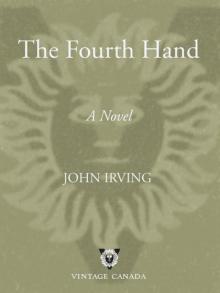 The Fourth Hand
The Fourth Hand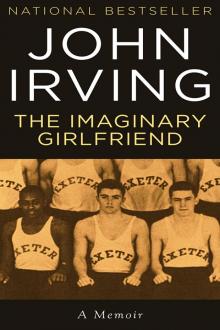 The Imaginary Girlfriend
The Imaginary Girlfriend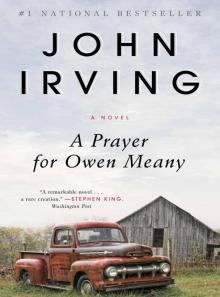 A Prayer for Owen Meany
A Prayer for Owen Meany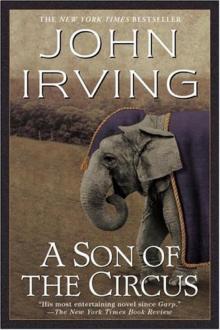 A Son of the Circus
A Son of the Circus Last Night in Twisted River
Last Night in Twisted River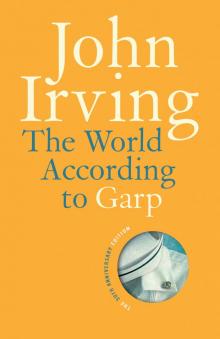 The World According to Garp
The World According to Garp The Cider House Rules
The Cider House Rules The Hotel New Hampshire
The Hotel New Hampshire The 158-Pound Marriage
The 158-Pound Marriage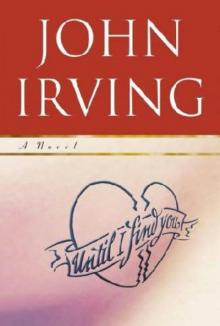 Until I Find You
Until I Find You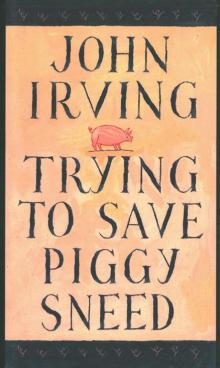 Trying to Save Piggy Sneed
Trying to Save Piggy Sneed Cider House Rules
Cider House Rules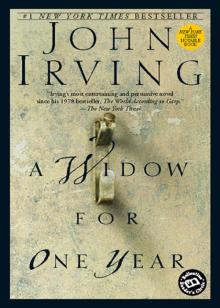 A Widow for One Year
A Widow for One Year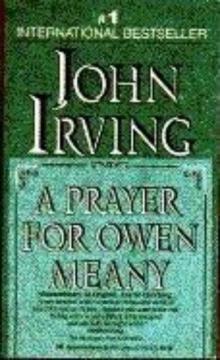 A prayer for Owen Meany: a novel
A prayer for Owen Meany: a novel (2005) Until I Find You
(2005) Until I Find You